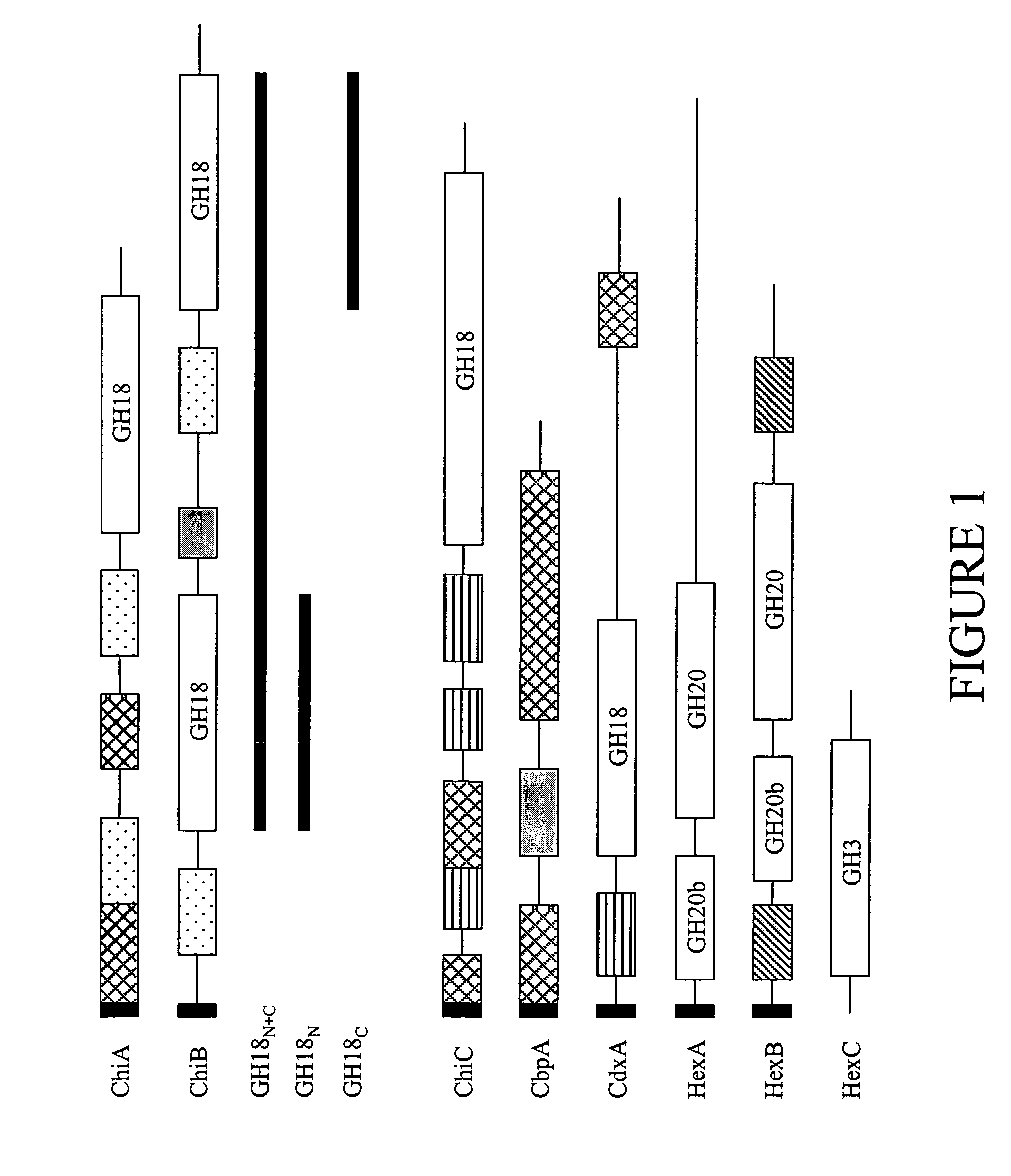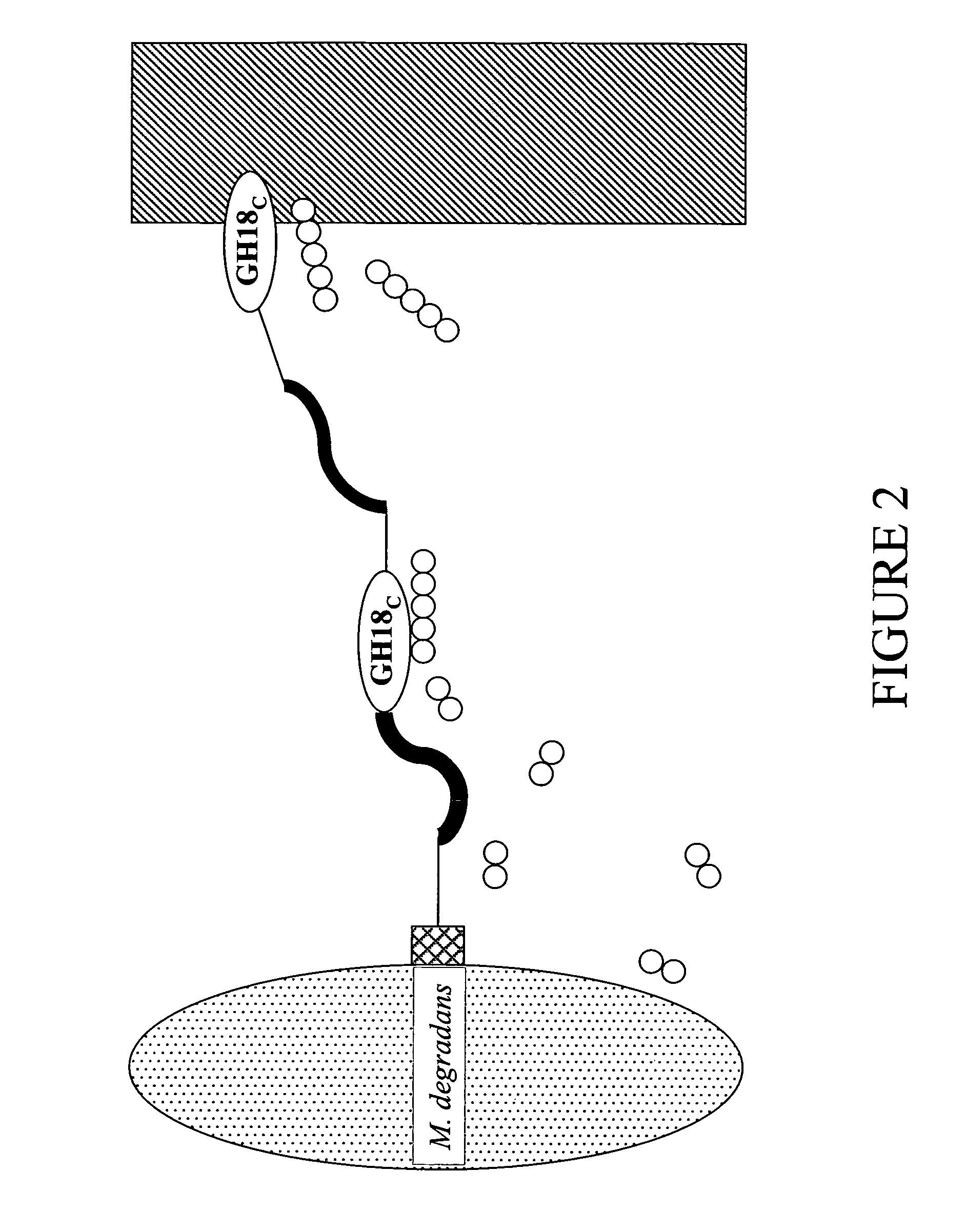Chitin degradative systems
a technology of enzyme systems and chitin, which is applied in the field of chitin depolymerases, can solve the problems of difficult enzymatic digestion, difficult breakage, and resistance to chemical degradation of chitin,
- Summary
- Abstract
- Description
- Claims
- Application Information
AI Technical Summary
Problems solved by technology
Method used
Image
Examples
Embodiment Construction
[0024]The degradation and metabolism of chitin by marine microorganisms appear to involve the synergistic action of multiple proteins, including several extracellular chitin depolymerases, non-catalytic chitin-bonding proteins, chitodextrinases, and periplasmic and cytoplasmic N-acetylglucosaminidases (chitobiases and N-acetylhexosaminidases). These proteins typically include conserved modules that function as catalytic domains or chitin-binding domains and also contain domains of unknown function such as fibronectin type III and / or polycystic kidney disease (PKD) domains. Many of the genes for these enzymes have been cloned individually from chitin-degrading organisms.
[0025]M. degradans is unique among marine bacteria in its ability to degrade more than 10 ICPs. The draft genome sequence reveals over 130 putative carbohydrases involved in the degradation of these ICPs. Forty-six of these proteins contain poly-amino acid linkers, which are generally limited to secreted enzymes invol...
PUM
| Property | Measurement | Unit |
|---|---|---|
| mass | aaaaa | aaaaa |
| molecular mass | aaaaa | aaaaa |
| molecular mass | aaaaa | aaaaa |
Abstract
Description
Claims
Application Information
 Login to View More
Login to View More - R&D
- Intellectual Property
- Life Sciences
- Materials
- Tech Scout
- Unparalleled Data Quality
- Higher Quality Content
- 60% Fewer Hallucinations
Browse by: Latest US Patents, China's latest patents, Technical Efficacy Thesaurus, Application Domain, Technology Topic, Popular Technical Reports.
© 2025 PatSnap. All rights reserved.Legal|Privacy policy|Modern Slavery Act Transparency Statement|Sitemap|About US| Contact US: help@patsnap.com



